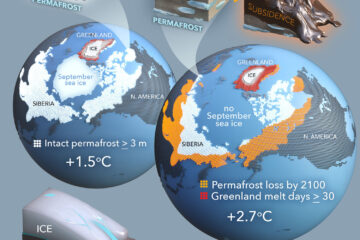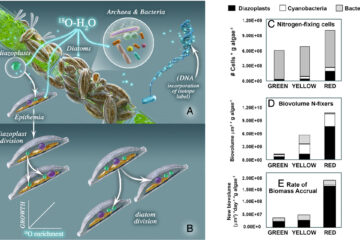Testing interactive effects of global environmental changes on soil nitrogen cycling
Responses of soil nitrogen (N) cycling to simultaneous and potentially interacting global environmental changes are uncertain. Here, we investigated the combined effects of elevated CO2, warming, increased precipitation and enhanced N supply on soil N cycling in an annual grassland ecosystem as part of the Jasper Ridge Global Change Experiment (CA, USA). This field experiment included four treatments—CO2, temperature, precipitation, nitrogen—with two levels per treatment (ambient and elevated), and all their factorial combinations replicated six times. We collected soil samples after 7 and 8 years of treatments, and measured gross rates of N mineralization, N immobilization and nitrification, along with potential rates of ammonia oxidation, nitrite oxidation and denitrification. We also determined the main drivers of these microbial activities (soil ammonium and nitrate concentrations, soil moisture, soil temperature, soil pH, and soil CO2 efflux, as an indicator of soil heterotrophic activity). We found that gross N mineralization responded to the interactive effects of the CO2, precipitation and N treatments: N addition increased gross N mineralization when CO2 and precipitation were either both at ambient or both at elevated levels. However, we found limited evidence for interactions among elevated CO2, warming, increased precipitation, and enhanced N supply on the other N cycling processes examined: statistically significant interactions, when found, tended not to persist across multiple dates. Soil N cycling responded mainly to single-factor effects: long-term N addition increased gross N immobilization, potential ammonia oxidation and potential denitrification, while increased precipitation depressed potential nitrite oxidation and increased potential ammonia oxidation and potential denitrification. In contrast, elevated CO2 and modest warming did not significantly affect any of these microbial N transformations. These findings suggest that global change effects on soil N cycling are primarily additive, and therefore generally predictable from single factor studies.


